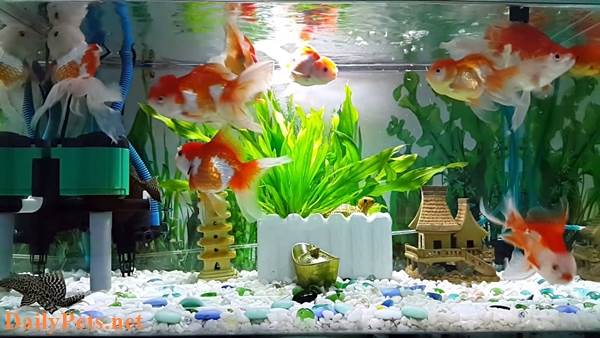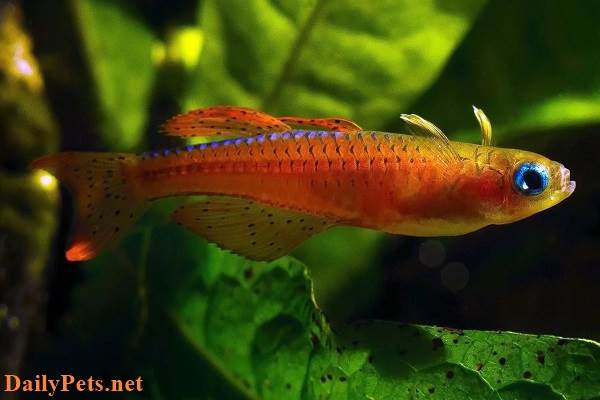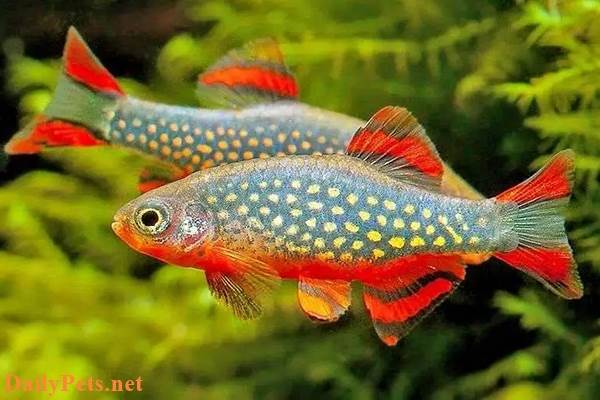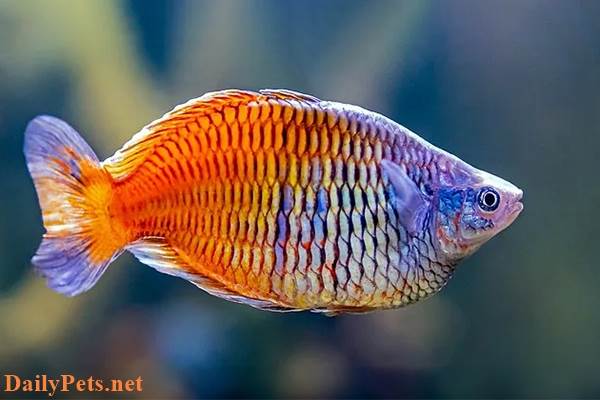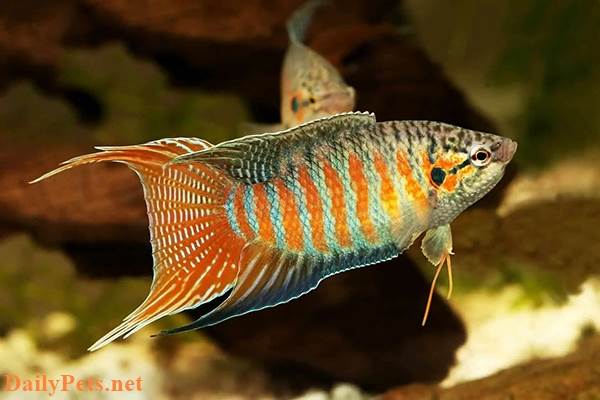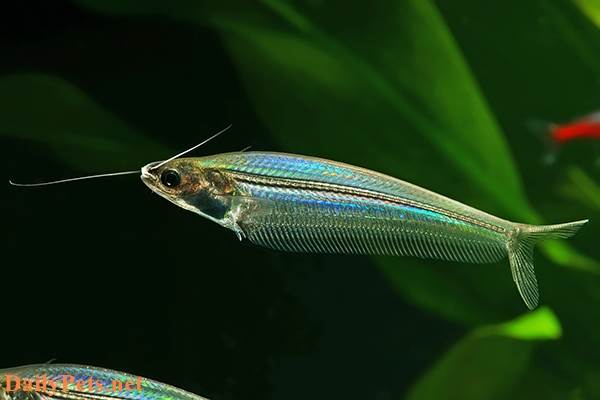In addition to the color variation, they have several notable qualities. One is the ability to regenerate certain body parts, including the spine and brain. Axolotl fish also have permeable skin, which means they absorb oxygen through their skin.
This article will explain how Axolotl fish grow, detailing their growth rate at different stages, their lifespan, and how to care for this exotic fish.
Where Do Axolotl Fish Come From?
Axolotl originates in the valley of Mexico, also known as the Mexican salamander. Originally, they lived in the lakes of Chalco and Xochimilco, although now they can only be found in the lake region of Xochimilco. Unfortunately, the population of this salamander is not what it used to be. In fact, they have been added to the list of endangered species by the International Union for Conservation of Nature (IUCN). However, many zoos across the United States have exhibits where you can see them up close.
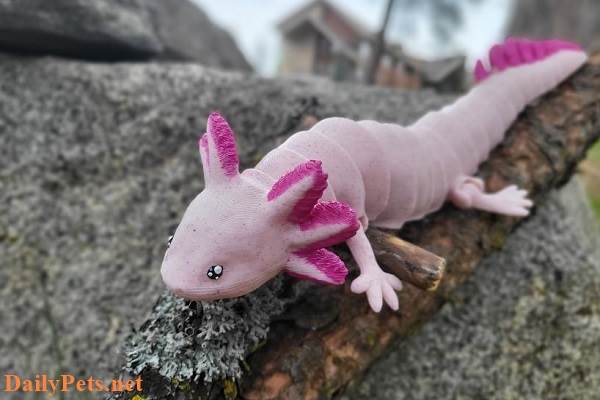
Axolotl Fish.
Unlike other salamanders, axolotls keep both lungs and gills as they mature. So they can breathe underwater and spend their entire lives in it. This fact is confusing because it leaves wondering what they are. Is it a fish or a salamander? It is still a salamander despite its special powers. They can regrow eyelashes or other injured body parts.
How Much Can Axolotl Fish Grow?
Axolotl fish are born as roe, the larvae of which are usually about 0.5 inches long.
Adult females lay between 100 and 1000 roe fish in each spawning. Each roe is laid individually and usually hatches after 14 days. Axolotl larvae start feeding as soon as they are a few hours old. Those from the third month to the first year are called juveniles.
How Big Is Adult Axolotl?
Most fully grown axolotls grow to about 9 inches. This is the average length of most axolotls, although they are known to grow up to 18 inches long.
In some cases, they are no longer than 6 inches, while in others, they grow up to 9 inches. The size of each salamander can be influenced by its habitat. Unlike other salamanders, they do not develop as larvae.
This is because they can uniquely retain the larval stage throughout their lives. This trait, called Neoteny, allows them to maintain both gills and lungs to live in water for the rest of their lives.
Once they are fully grown, it will be easier to identify males from females. This is because the males develop a blood clot while the females have a wider body. This increase in width creates room for roe fish as females can lay up to 1000 roe!
When Are Axolotl Fish Fully Adult?
Axolotls reach full-grown size between their first eighteen and twenty-four months.
This is a wide range as other factors affect their growth rate. Conditions of their habits and feeding patterns can shorten or prolong this growth period. Also, the size of the tank can prevent them from growing larger. When the young are moved to a larger space, it will create conditions for them to grow larger.
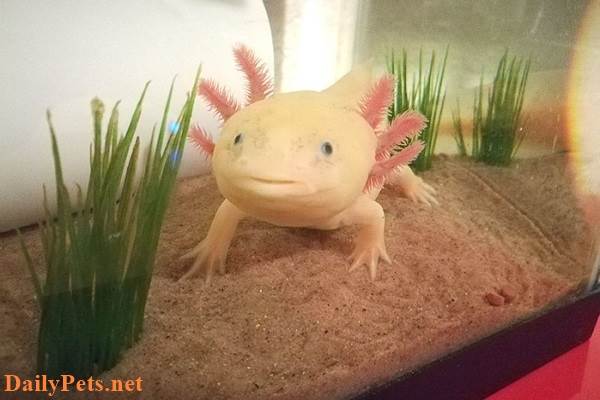
The Axolotl is a great pet.
Usually, females take longer to mature than males. Although juveniles have been known to reach sexual maturity within 5 to 6 months, their bodies continue to develop until full adulthood.
Should Axolotl fish be kept as a pet?
Yes, the Axolotl is a great aquarium fish and pet. Indeed, they do not interact much because they prefer to be alone. However, they have many endearing qualities that make them good companions, even if all you do is observe or observe.
In captivity, Axolotl can live as long as 25 years. Their colors vary, such as red, green, brown, and olive-brown. Although not large when swimming, their colorful appearance makes a great addition to any aquarium.
Axolotl has what you might call a resting smiley face. Overall, they are very easy to care for. Who doesn’t want a pet capable of self-healing?
How To Tell Axolotl Grows To Maximum Size?
Although the Axolotl can grow up to 18 inches, most pets are only 9 inches long. Juveniles grow as they grow; some may be larger or smaller than the known average size. There’s hardly anything you can do to make these pets super big. Instead, you can set up the environment and nutrition to encourage them to grow to adulthood. This salamander completes its growth cycle within the first two years. So any effort to ensure they grow to their full potential must be made during this period.
Many things can determine how well your salamander grows, including its tank size and water temperature. While growing, it adapts to the size of the tank. If the tank is small, it will adapt to fit that space as it grows. So even baby axolotls need spacious tanks, giving them enough room to grow and thrive. The need for space is even more essential if you own more than one.
Axolotls thrive in their native habitat – Lake Xochimilco, where temperatures are around 60 – 65 degrees Fahrenheit. This makes it necessary to check the water parameters in the tank. Temperature, PH, nitrate, and ammonia must be kept under healthy conditions.
Finally, axolotls are carnivores and need a steady supply of protein to stay healthy and grow normally. A healthy diet of axolotls includes salmon pellets, white worms, and bloodworms. However, you must be careful not to overfeed them because it will adversely affect their health. Here is the complete list of what axolotls eat.
